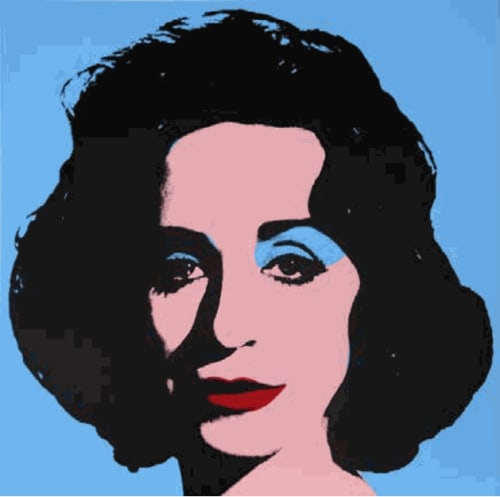Deborah Kass is a moderately well-recognized, New York-based artist in her late 40s. If casual viewers fail to notice the resemblance between her work and Andy Warhol’s, she reminds them by calling her exhibition “Deborah Kass: The Warhol Project.”
Exhibited at UC Santa Barbara’s University Art Museum, a dozen large works either insert Kass’ face into Warhol’s self-portraits or substitute her choice of celebrity subject for his. Where Warhol depicted Elvis Presley, Kass prefers Barbra Streisand. Where he silk-screened Chairman Mao, Kass squeegees Gertrude Stein and calls her “Chairman Ma.” Where Warhol chose Liza Minnelli, Kass has Cindy Sherman impersonate the entertainer.
It doesn’t take long to realize that this show isn’t about enjoying the pretty pictures. Kass has a message and we’re supposed to figure it out.
Warhol stressed his expressive neutrality. He made us believe he had no ax to grind and was thus probably telling the truth about culture in his time. Kass retains Warhol’s attitude of public discourse, but by the simple act of replacing his generic subject matter with more specific choices of her own, she personalizes his format.
The move tilts her homage toward a critique of Warhol’s cool. Clearly, Kass prefers a more engaged and emotional art, but of what nature? At this point, a casual viewer may have the uneasy feeling of standing on the edge of a field mined with ideological booby-traps. Better read the catalog.
We learn that the traveling show is about half the size it was as organized for Tulane University’s Newcomb Art Gallery. Curator Michael Plante also wrote the main catalog essay. The parts that aren’t couched in such art-world terms as “postmodern,” “appropriation” and “deconstruction” are phrased as aspects of identity and gender politics. The artist makes no bones about the fact she is a feminist, a Jew and a lesbian. Her art intends to express that point of view, and anybody who feels excluded is excused.
People who hang in on the principle that we’re all part of the circus find rewards in Kass’ show. She varies “Before and After,” Warhol’s depiction of a nose-job ad, by inserting a Disney drawing of Cinderella getting the glass slipper--and she calls it “Before and Happily Ever After.”
Plante offers significant in-group trivia in case you’re not initiated: Warhol himself had a nose job; Streisand is an icon to homosexuals for daring to be different.
Kass’ “Single Red Yentl (My Elvis)” depicts the singer in her film role of a Jewish girl who masquerades as an Orthodox boy to get access to Talmudic learning. The tension between conventional taboos and the ambiguity of sexual role-playing resonates.
Warhol’s posture as an abject fan made him a superstar. That only works once. Today, it would be courageous if an artist like Kass would confront the ludicrous celebrity accorded people who don’t deserve it. We need to grow up and be our own heroes.
* “Deborah Kass: The Warhol Project,” University Art Museum, UC Santa Barbara. (805) 893-2951. Closed Monday. Through Sept. 3.
